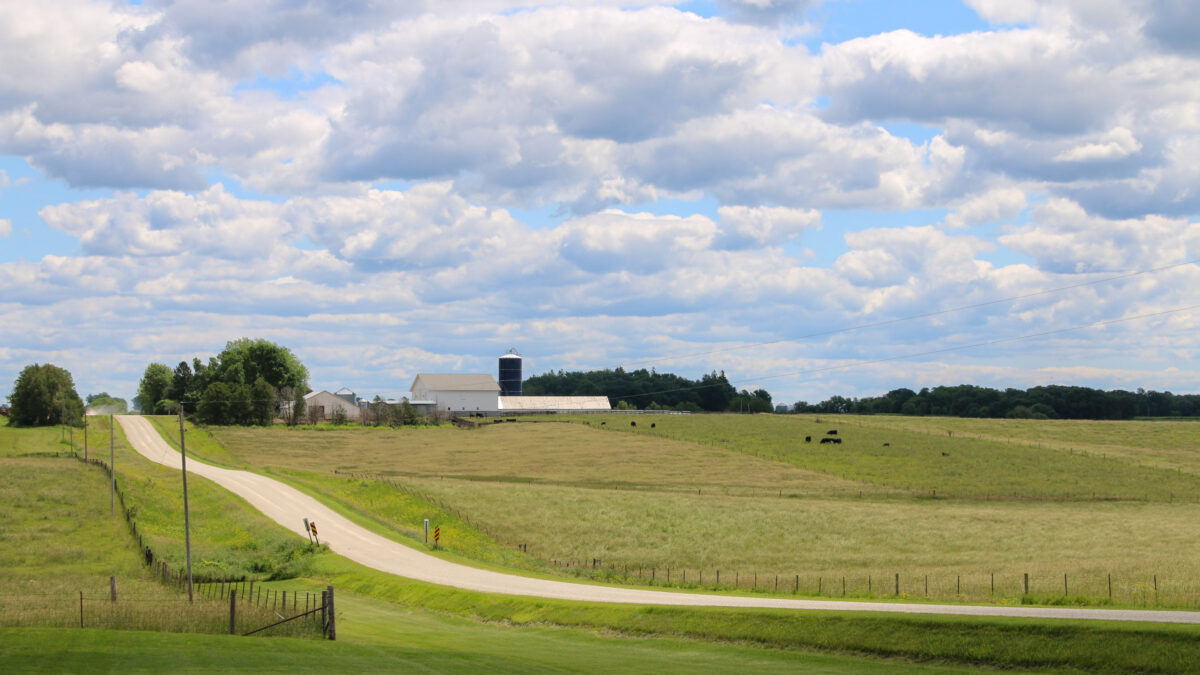The Challenges and Opportunities of Improving a Critical Link of the Agriculture Supply Chain

photo credit: Alabama Farmers Federation, Used with Permission
Agriculture depends on safe and efficient infrastructure. Rural roads and bridges are a critical link in our nation’s food supply chain. Preliminary data from the Bureau of Transportation Statistics Commodity Flow Survey show that more than 70% of America’s freight, worth $10 trillion, is moved on the highway system. U.S. roads and highways link farmers, ranchers, manufacturers and service industries to grain elevators, ethanol plants, processors, feedlots, markets and ports.
Rural roads’ significant deficiencies have created many challenges -- and opportunities -- to improving the efficiency of the agricultural supply chain. However, America’s ability to address its rural transportation challenges is threatened by a significant decrease in state transportation revenues due to the COVID-19 pandemic, an existing backlog of surface transportation projects and the continued need for regulatory flexibility.
When considering the surface transportation reauthorization, Congress must prioritize the safety and efficiency of rural infrastructure and the farmers, ranchers and businesses that rely on it. The Fixing America’s Surface Transportation (FAST) Act expires at the end of September 2020, creating an opportunity for Congress to focus on a timely and adequately and reliably funded federal surface transportation program.
Rural Road and Bridge Conditions
According to TRIP, a national transportation research group, in 2018, 13% of the nation’s major rural roads (arterials and collectors) were in poor condition, a 2-percentage point decrease from the previous year. Rural roads in mediocre condition have remained unchanged from 2017 at 21%, while 16% were in fair condition. Only 50% of the rural roads were rated in good condition.
In 2019, 8% of the nation’s rural bridges were rated poor or structurally deficient. While 71% of the nation’s bridges are in rural areas, 79% of the nation’s bridges rated poor or structurally deficient are rural.
In 2018, the 20 states with the highest percentage of roads in poor condition represent $117 billion, or 32% of total cash receipts for all commodities. The two maps in Figure 1 illustrate the percent of rural roads and bridges in poor or structurally deficient condition and denotes the 20 states in each category with the highest percentage of roads or bridges in poor condition.

Safety and Efficiency
Based on data from the Federal Highway Administration, deficient road conditions, lack of road safety measures such as rumble stripes and signage, and the long distances emergency vehicles must travel have driven the traffic fatality rate on rural, non-interstate roads to twice that of all other roads. In 2018, non-interstate rural roads had a traffic fatality rate of 2 deaths for every 100 million vehicle miles of travel, compared to a fatality rate of 0.88 deaths per 100 million vehicle miles traveled on all other roads. Figure 2 shows the 20 states with the highest rates of rural road fatalities per 100 million vehicle miles traveled compared to all other roads.

The COVID-19 emergency has highlighted the necessity of maintaining a safe and efficient agricultural transportation system to ensure food continues to move to consumers. While agriculture continues to address bottlenecks and worker safety, the future of the supply chain depends on increased funding for road and bridge improvements and further transportation-related regulatory flexibility.
Funding
A major opportunity to improve this important link in the U.S. agricultural supply chain is to increase funding for the maintenance and improvement of rural roads. According to an analysis by the Department of Transportation, there is a $211 billion backlog of maintenance projects for the nation’s rural roads, highways and bridges.
According to the Congressional Budget Office’s March 6, 2020, baseline report, which does not include impacts from the COVID-19 emergency, the Highway Trust Fund will be $18.3 billion short by 2023, climbing to a $134.6 billion shortfall by 2029. Compounding the financial needs of surface transportation projects is the estimated decrease of 30%, or $50 billion, in state transportation revenues over the next 18 months due to reduced vehicle travel as a result of the COVID-19 pandemic.
The integrity of our food supply chain relies on sound transportation infrastructure. Unfortunately, due primarily to lack of investment over several decades, America’s infrastructure is in a dire state of rapid deterioration. Of particular concern is the surface transportation system which, according to the American Society of Civil Engineers, faces a $100 billion annual investment gap. ASCE reports that system deficiencies are causing gross domestic product losses in excess of $116 billion each year.
Summary
Further degradation of surface transportation efficiency threatens our nation’s economic standing in the world and endangers the livelihood of farmers and ranchers. It also jeopardizes our food supply and the ability to move goods safely and efficiently to consumers. More than 70% of U.S. agricultural and food products travel on the nation’s 4.1 million miles of public access roads, 2.9 million, or 71%, of which are in rural areas.
As Congress considers surface transportation legislation, lawmakers should not overlook the opportunity infrastructure investment provides to generate powerful economic stimulus in the near-term while simultaneously laying a strong foundation for long-term growth. Investing in the needed highway projects across the country would put hundreds of thousands of Americans back to work, helping revitalize the economy
